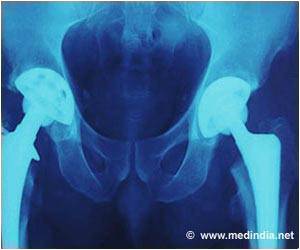Highlights:
- World Osteoporosis Day is observed every year on 20th October.
- This day is dedicated to raising public awareness of bone health and the need for osteoporosis and fracture prevention.
- The theme for World Osteoporosis Day 2017 is “Love Your Bones, Protect Your Future.”
Symptoms of Osteoporosis
Osteoporosis develops slowly over several years. It is likely there will be no warning signs or symptoms until a minor fall or sudden impact causes a bone fracture.Some signs of osteoporosis can include:
- Back pain, caused by a fractured or collapsed vertebra
- Gradual loss of height
- Being stooped
- A bone fracture that occurs much more easily than expected
Osteoporosis - Incidence and Burden
Osteoporosis remains a major public health problem through its association with fragility fractures. Despite the availability of preventative therapeutic agents, the incidence and its associated costs continue to rise globally.- Worldwide, osteoporosis causes more than 8.9 million fractures annually, resulting in an osteoporotic fracture every 3 seconds.
- Worldwide, 1 in 3 women over age 50 will experience osteoporotic fractures as will 1 in 5 men aged over 50.
- 80%, 75%, 70% and 58% of forearm, humerus, hip and spine fractures, respectively, occur in women. Overall, 61% of osteoporotic fractures occur in women, with a female-to-male ratio of 1.6.
- Nearly 75% of hip, spine and distal forearm fractures occur among patients 65 years old or over.
- By 2050, the
worldwide incidence of hip fracture in men is projected to increase by
310% and 240% in women, compared to rates in 1990.
Risk Factors for Osteoporosis
Risk factors for osteoporosis are divided into two:1. Fixed Risks
2. Modifiable Risks
Fixed risk factors cannot be changed, people need to be aware of them, so that they can take steps to reduce bone mineral loss.
Fixed risk factors include:
- Age
- Female gender
- Family history of osteoporosis
- Previous fracture
- Ethnicity
- Menopause/hysterectomy
- Long term glucocorticoid therapy
- Rheumatoid arthritis
- Primary/secondary hypogonadism in men
Modifiable risk factors include:
- Alcohol
- Smoking
- Low body mass index (BMI)
- Poor nutrition
- Vitamin D deficiency
- Eating disorders
- Insufficient exercise
- Low dietary calcium intake
- Frequent falls
Can osteoporosis and fractures be prevented? Yes, if action is taken early!
Genetic factors play a significant role in determining, if an individual is at heightened risk of osteoporosis. However, lifestyle factors such as diet and physical activity also influence bone development in youth and the rate of bone loss later in life.The 5 steps to healthy bones and a fracture-free future:
1. Exercise regularlyWeight-bearing, muscle-strengthening and balance-training exercises are best.
2. Ensure a diet rich in bone-healthy nutrients
Calcium, vitamin D and protein are the most important for bone health. Safe exposure to sunshine will help you get enough vitamin D.
3. Avoid negative lifestyle habits
Maintain a healthy body weight, avoid smoking and excessive drinking.
4. Find out whether you have risk factors
Bring these to your doctor’s attention, especially if you’ve had a previous fracture or have specific diseases and medications that affect bone health.
5. Get tested and treated if needed
If you’re at high risk, you will likely need medication to ensure optimal protection against fracture.
Start Osteoporosis Prevention Early
Our bones reach their maximum strength and size (peak bone mass) in early adulthood, around the mid-20s.It is estimated that a 10% increase of peak bone mass in children, reduces the risk of an osteoporotic fracture during adult life by 50%.
Osteoporosis prevention for children and adolescents
- Ensure a nutritious diet with adequate calcium intake
- Avoid protein malnutrition and under-nutrition
- Maintain an adequate supply of vitamin D
- Participate in regular physical activity
- Avoid the effects of second-hand smoking
Osteoporosis prevention for adults:
- Ensure a nutritious diet and adequate calcium intake
- Avoid under-nutrition, particularly the effects of severe weight-loss diets and eating disorders
- Maintain an adequate supply of vitamin D
- Participate in regular weight-bearing activity
- Avoid smoking and second-hand smoking
- Avoid heavy drinking
References:
- About World Osteoporosis Day - (http://worldosteoporosisday.org/about-world-osteoporosis-day)
- World Osteoporosis Day - (https://www.iofbonehealth.org/)
- Osteoporosis Overview - (https://www.bones.nih.gov/health-info/bone/osteoporosis/overview)
- Facts and Statistics - (https://www.iofbonehealth.org/facts-statistics#category-14)
- Cole ZA, Dennison EM, Cooper C, Osteoporosis Epidemiology Update. 2008. Pub Med, National Center for Biotechnology Information.
Source-Medindia














